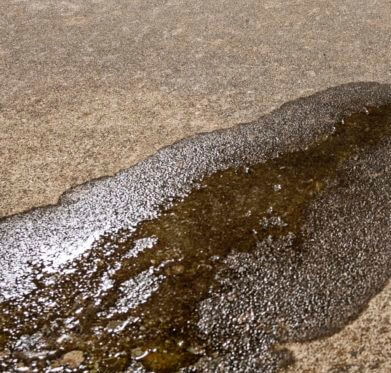Common Causes of Furnace Leaks and What to Do About Them
Noticing that there is water leaking from around your furnace can be a disappointing experience. Still, you don’t need to immediately start panicking. Most of the causes of furnace leaks aren’t all that serious, and the majority of them can be fixed fairly easily. In fact, most of the time, the leaks aren’t actually related to your HVAC system but instead more of a plumbing problem.
High-Efficiency Condensing Furnaces vs. Conventional Furnaces
If you notice water leaking from your furnace, the first thing you’ll need to do is determine what type of furnace you have. High-efficiency and conventional furnaces can both suffer from leaks. However, the potential problems that may be causing the leak are very different for each type of furnace. Therefore, it is essential to know what type of furnace you have before you can begin troubleshooting the source of the problem.
The easiest way to determine whether you have a high-efficiency condensing furnace or a conventional furnace is to look at the exhaust pipe or vent. Condensing furnaces will have a white plastic PVC vent, whereas conventional furnaces use metal exhaust pipes. You can also tell which type of furnace you have by looking at its annual fuel utilization efficiency rating, or AFUE. This information is typically found on a yellow Energy Guide sticker located somewhere on the exterior of the furnace. If the AFUE rating is 90% or above, the furnace is high efficiency. Ratings below 90% usually indicate that it is a conventional furnace.
Generally speaking, high-efficiency furnaces are much more prone to leaking than conventional furnaces. The reason for this is in the way these condensing furnaces work. Conventional furnaces have one heat exchanger, and this only extracts heat from the natural gas for a short time before venting the gas out the exhaust pipe.
High-efficiency furnaces utilize two heat exchangers to extract much more heat from the gas. This second exchanger extracts so much heat from the gas that it eventually changes into a liquid state and condenses into water. It is this condensation that causes high-efficiency furnaces to be more prone to water leaks. When the system is functioning properly, this water simply drains out the condensate line.
Causes of Leaks in High-Efficiency Furnaces
The most common causes of leaks in high-efficiency furnaces are related to an issue with the condensation line, drain line, drain pan, or floor drain. If the condensation line is clogged, leaking, or broken, it can lead to water collecting around your heater instead of draining away as it should. A damaged drain pain can also lead to water collecting around the furnace, and often this problem is related to the previous. When the condensation drain line becomes clogged, it can result in water sitting in the drain pan for long enough that the pan begins to develop rust and holes. Luckily, these problems are usually quick and easy to solve, and regular maintenance of your furnace and heating system can also help you to avoid them altogether.
The problem might also be related to a clog in your floor drain, in which case you’re dealing with more of a plumbing issue than a furnace problem. Even if your floor drain isn’t clogged, any clogs or other drainage issues in your plumbing system can cause water to back up throughout your floor drain. This can make it look like water is leaking from the furnace when in reality it is simply water from elsewhere pooling up around the unit.
Leaks can also occur due to a faulty or malfunctioning secondary heat exchanger. Unfortunately, this problem tends to be much more severe. In most cases, this issue will require you to have your furnace replaced.
Causes of Leaks in Conventional Furnaces
Water leaking from a conventional furnace is almost always related to the flue or exhaust pipe. When working properly, the flue pipe quickly funnels the exhaust gases created during the heating process outside of the home before they have time to cool down and condense. However, a poorly fitted or improperly designed vent pipe can cause air to circulate and trap the exhaust gases inside the vent. When this happens, the gases can cool and form condensation that drips out of the furnace or the vent pipe.
In most cases, the problem is that either the vent pipe is too big or doesn’t have enough slope. The easiest way to check if this is the issue is to examine the pipe. If you notice that it doesn’t have any slope or see water leaking out of the pipe, it is best to call a professional and have the pipe replaced.
Leaks Caused by a Dirty Air Filter
No matter which type of furnace your home has, the problem could also be related to a dirty air filter. When an air filter becomes clogged with dust, it drastically restricts the airflow to your heating coil. Although this usually results in the coil freezing up, it can also cause water to drip and pool up around the furnace.
Leaks Caused by a Whole-Home Humidifier
If your house has a whole-home humidifier installed as part of your HVAC system, this could also be the culprit behind your furnace leak. Humidifiers have a constant flow of water going through them, which obviously makes them somewhat prone to leaks. Determining if your humidifier is the source of the water is usually as easy as inspecting the outside of the unit for any visible leaks and checking to see if the drain line, water line, and feed tube are damaged or clogged.
Leaks Caused by an Air Conditioner
Many people also notice leaks around their furnace only when their air conditioner is running. This is especially common in situations where both the furnace and air conditioner are run within a short time of each other, which is definitely something that can happen frequently when living in the desert. In these situations, condensate can build up so quickly in the drain pain that it begins to leak out of your furnace. However, a clogged condensation drain line can also cause water leaks when you run your AC unit in exactly the same way as it would when running the furnace.
What to Do If You Notice Water Leaking Around Your Furnace
If you notice water leaking out of your furnace, the first thing you should do is shut off the system or turn off the breaker. You should then attempt to sop up any standing water or suck it up with a wet-dry vacuum if needed. The next step should be to check your air filter and replace it if it’s dirty and clogged. If this still doesn’t solve the issue, then it’s time to call in professional help to make sure your drains aren’t clogged.
Professional HVAC Services You Can Rely On
Water leaking from your furnace can be caused by many issues, but most commonly it is a sign of a plumbing or drainage problem. At Crystal Blue Plumbing, Heating, & Air, our team of professional plumbers is on hand to diagnose and repair any plumbing or drainage issues you might be experiencing in Loomis or the surrounding area. Our rooter services can help to clear up any clogs in your water or sewage lines, and we can also inspect your entire plumbing system for leaks. We also specialize in tankless water heaters, gas lines, slab leaks, and more.
Don’t stress yourself out about water leaks in your home. Call Crystal Blue Plumbing, Heating, & Air today to get the reliable, professional service your home deserves.







